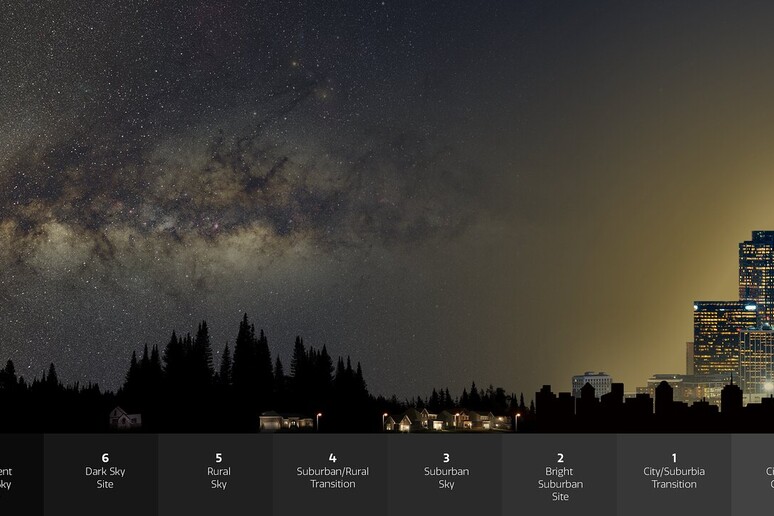Years of protests about the dangers of light pollution have become a desperate SOS: the starry sky is fading around the world at a faster rate than expected, between almost 7% and 10%, higher than previous predictions based on satellite data. If this trend continues a child born today in a place where 250 stars are visible will be able to see just 100 of them when he turns 18, note the authors of the research led the astronomer Christopher Kyba, of the German Research Center for Goesciences in Potsdam and published in the journal Science.
It has been a true collective effort to denounce an increasingly stars-poor sky, as the research data were collected over 12 years by 51,351 amateur astronomers, from over 19,000 locations, about 3,700 of them in Europe and about 9,500 in North America. This so-called 'citizen science' marathon was conducted as part of the ‘Globe at Night’ program initiated by the US National Science Foundation NOIRLab.
"It's bad news, but we expected it," comments Alberto Cora of the Turin Astrophysical Observatory of the italian National Institute of Astrophysics (INAF). "This beautiful example of citizen science indicates that the visibility of stars is definitely shrinking. The data from satellites are different from those recorded by the citizenry. We know - he adds - that there is an inevitable increase in light pollution, for example as a result of the increase in population and an increase in lighting". A phenomenon that could be attributed to a more frequent use of LEDs, reads the article. "We're probably using badly these technologies," Cora notes, "using colors and frequencies that spread more easily."
As indicated in the research a sort of persistent light mantle is spreading all over the world, the so-called 'skyglow', which progressively obscures the stars: "if these were mountains, we could imagine light pollution as a sea that rises progressively, submerging and hiding the lowest peaks", says Cora. It is a phenomenon that continues to increase despite the countermeasures possibly enacted to limit it, as stressed in a comment on the research published in the same issue of the journal.
The consequences do not affect just the sky, because light pollution "also makes its effects felt on the behavior of animals, day and night", notes Constance Walker, co-author of the research and head of the Globe at Night project. The data indicates that the phenomenon is increasing at a rapid pace everywhere, ranging from 6.5% in Europe to 10.4% in North America. It is also true, however, observe the authors of the research, that a larger group of people participated from North America. If this is a limit of the study, Kyba concludes, it is also an important example of how the new data obtained by citizens could supplement the previous measurement methods.
Riproduzione riservata © Copyright ANSA













